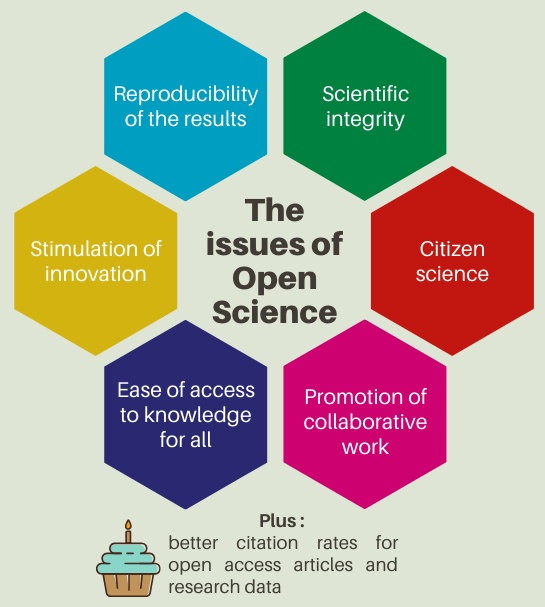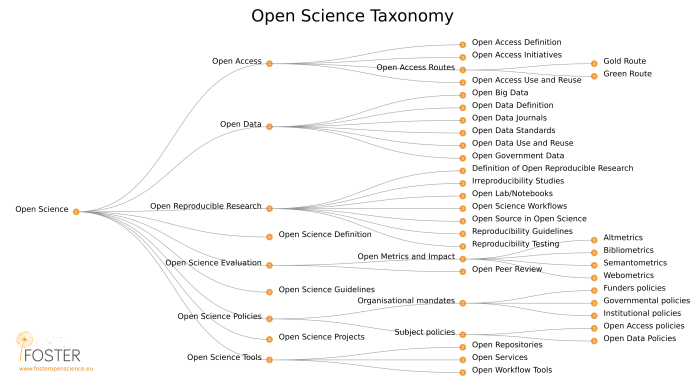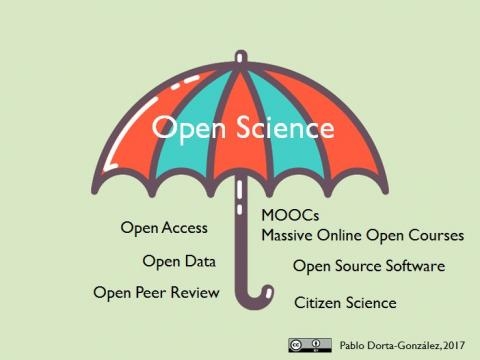What is Open Science?
Over the past two decades, Open Science has gained an important position in research strategies and guidelines.
Open Science encompasses a wide range of trends and directions, largely made possible by new digital technologies for sharing information. It is closely related to the concept of "Science 2.0", which emphasizes the possibilities that digital tools and the internet provide for collaboration and information sharing.
Open Science implies both the continuation and critique of existing scientific traditions. Many of the principles of open science are a continuation of established principles of good research, but also a critique of the tendency to keep much of the research process hidden and "lock" access to the results behind paywalls.
There is a wide range in the expected effects of open science. Increased reproducibility and quality, increased value creation, democratization of knowledge, and increased innovation are just some of the benefits often mentioned. However, this does not prevent certain aspects of open science from being debated, including the potential for misuse of data for illegitimate purposes (such as biological weapons) and the alleged lower quality of publications in open journals being used as arguments against open science. In Norway, there has been some debate around open licenses in connection with Plan S, where among others, Forskerforbundet – The Norwegian Association of Researchers (NAR), has opposed the proposed mandatory CC-BY license.
Aspects of Open Science
Open Science is an umbrella term that covers a wide range of activities and principles.
The most common overviews of open science usually include open access to publications, open data, open source code, and open educational resources. In addition, open methodology (including pre-registration of studies, particularly used in clinical trials) and citizen science or user interaction are often included. What is considered part of open science often depends on what is emphasized - what should be open to whom for what reasons. If democratization and inclusion of the public are emphasized, citizen science is a natural part of open science, but if reproducibility is the main focus, transparency and open data are often prioritized.
FOSTER Open Science, an EU-supported e-learning portal for open science, has developed a comprehensive taxonomy for open science:
Illustration: FOSTER Open Science CC BY 4.0
Other representations of the Open Science umbrella have a simpler structure:
Open Science in Practice: Sound, Reproducible, and Open
In terms of open science in practice, it is primarily open access to publications and open data that have been at the center. However, other elements within open science, such as open source code, open peer review, and open educational resources, are beginning to receive more focus. This not only makes knowledge and research results accessible to more people, but also makes the research process and methodology more transparent and increasingly verifiable and improvable.
Since good management of research data is a prerequisite for both open data and general reproducibility, open science in practice also implies good routines and tools for data management. Good data management practices, including information security and privacy, thus become an important element in the introduction of open science.
In this context, it is important to emphasize that openness in research is not an absolute "either-or", but can be done partially, gradually, and in different ways at different times. The principle for open science must always be "as open as possible, as closed as necessary". Considerations related to privacy, research ethics, or legal assessments, for example, will dictate what can be openly shared and what cannot. Open science should always mean sound and ethical research, and in addition aim to be as transparent, verifiable, and openly accessible as possible.
Examples of Open Science in Practice
-
eLife: An Open Access journal that also has clear guidelines for data availability, uses an open-source software for publishing, and has open peer review that is published along with articles. eLife has also started testing so-called "Executable Research Articles", with data, code, analysis, and interactive figures available for exploration and download.
-
Open Source Malaria: A research project that develops malaria medicine. Anyone who wishes can participate in the collaboration and contribute suggestions for adjustments to the project, and everything is shared along the way, including ideas, protocols, lab journals, data, results, etc., and nothing will be patented.
-
Allen Brain Map: The Allen Institute for Brain Science is a research institute aiming to understand how the brain works and makes data, digital resources, and tools openly available.
Text: Open Science Toolbox/Sikt


